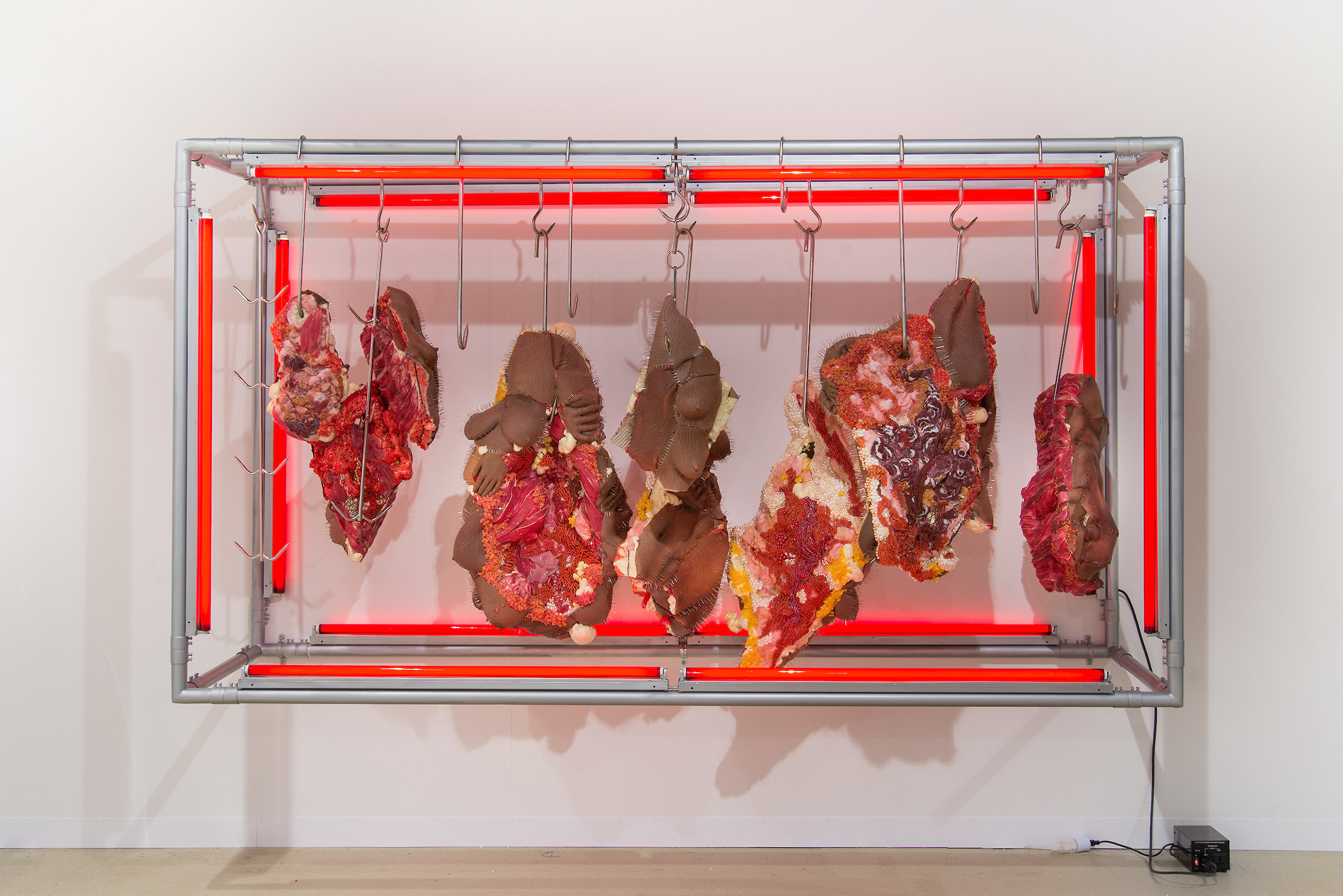Red Rack of those Ravaged and Unconsenting (2018)

Doreen Garner, Red Rack of those Ravaged and Unconsenting, 2018
Stainless steel bars, fluorescent lights, wiring, silicone, insulation foam, glass beads, fiberglass insulation, steel hooks, steel pins, pearls, 162 × 288 × 81 cm
Courtesy Collection Köser, Cologne
Red Rack of those Ravaged and Unconsenting (2018) consists of a large metal structure adorned with red neon tubes. A number of elongated objects made of brown silicon body parts are suspended on hooks, with pegs, marbled silicon, expanding foam, glass fiber insulation, precisely arranged beads, and a layer of sharp nails on the surface. Each of these abstract forms is about as large as a human torso, but together these objects look like one single outsized organ. This specific reproduction of fragmented bodies alludes to the process of cutting up and sewing together. The work presents the dehumanization of black bodies throughout history, referring to specific events that were associated with the medical doctor James Marion Sims (1813 – 1883). Sims was an American physician specialized in gynecological surgery. His most important work was to develop a technique to repair vesicovaginal fistula, an abnormal or surgically engendered hole between the bladder and the vagina, a catastrophic complication of childbirth in the nineteenth century. Between 1845 and 1849 Sims conducted cruel experiments on enslaved women, deliberately not anaesthetizing them, until he finally developed a surgical technique to successfully repair the fistula.
The materials that Garner uses in the figurative element of Red Rack of those Ravaged and Unconsenting (2018), such as glass fiber insulation and expanding foam, refer to a discovery that was made in 1989 when the 154-year-old Medical College of Georgia was refurbished. Up to 10,000 human bones and skulls were found underneath the school’s basement, bearing the traces of anatomical instruments from the nineteenth century. An unprecedented increase in student numbers in the medical faculties in the middle of the eighteenth century had led to a new need for human bodies. Between 1835 and 1912, the Medical College of Georgia routinely removed bodies from the Afro-American Cedar Grove Cemetery. Later it became known that many schools in the north of the country had also plundered graves in the name of medical progress. In her book Medical Apartheid, author Harriet A. Washington describes the difficulties that this meant for black people: “For blacks anatomical dissection meant even more: it was an extension of slavery into eternity, because it represented a profound level of white control over their bodies, illustrating that they were not free even in death.”